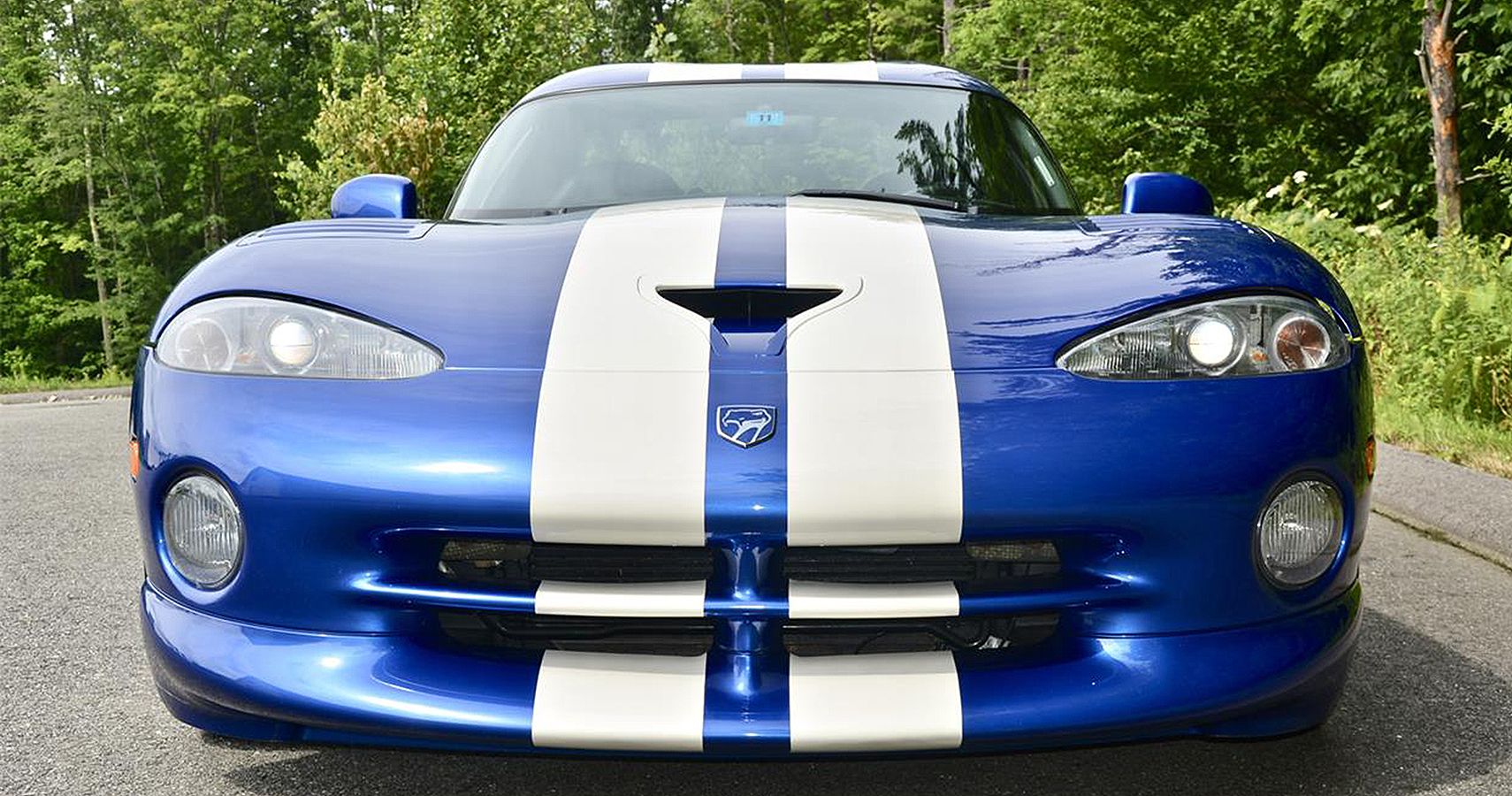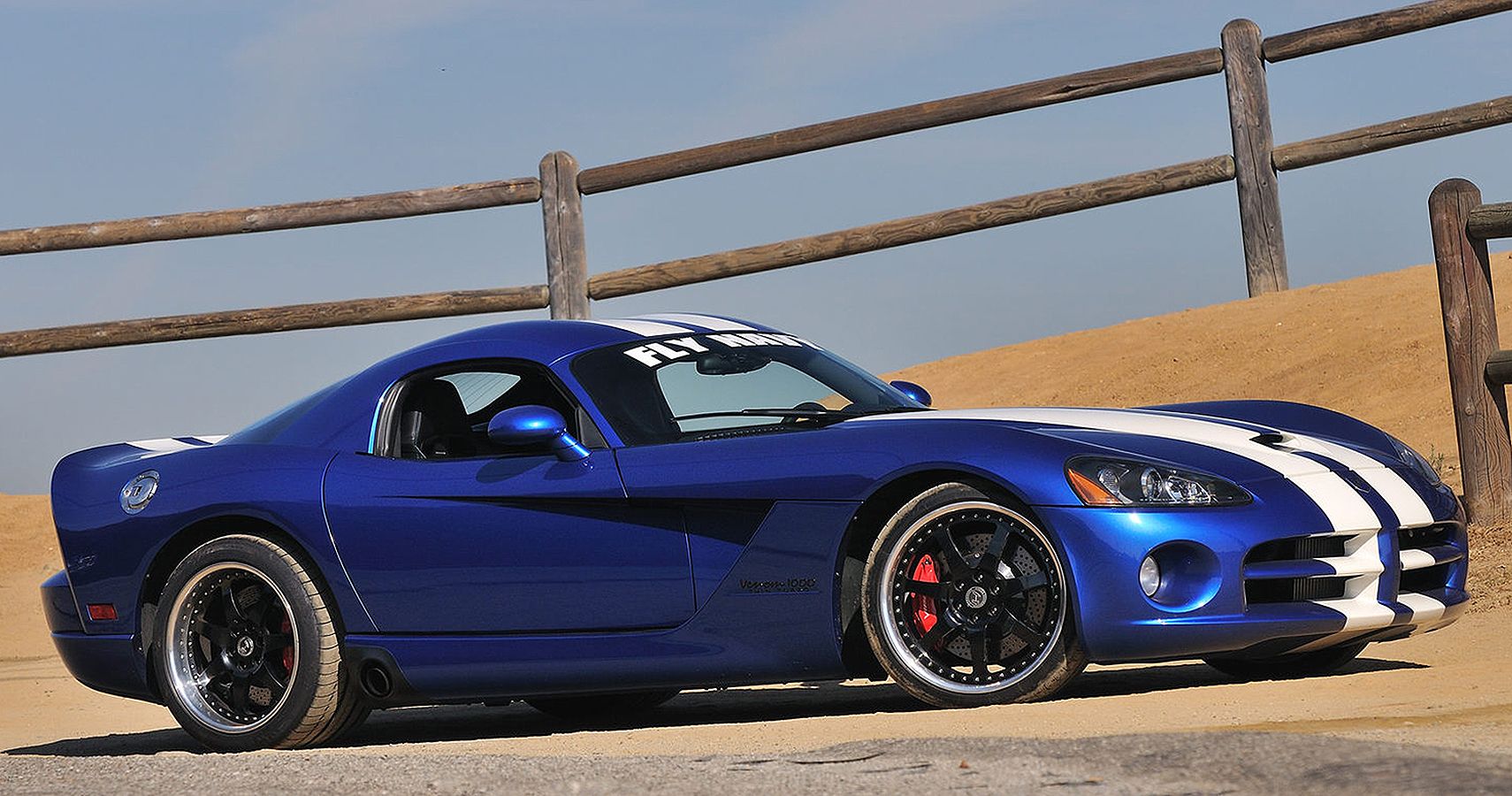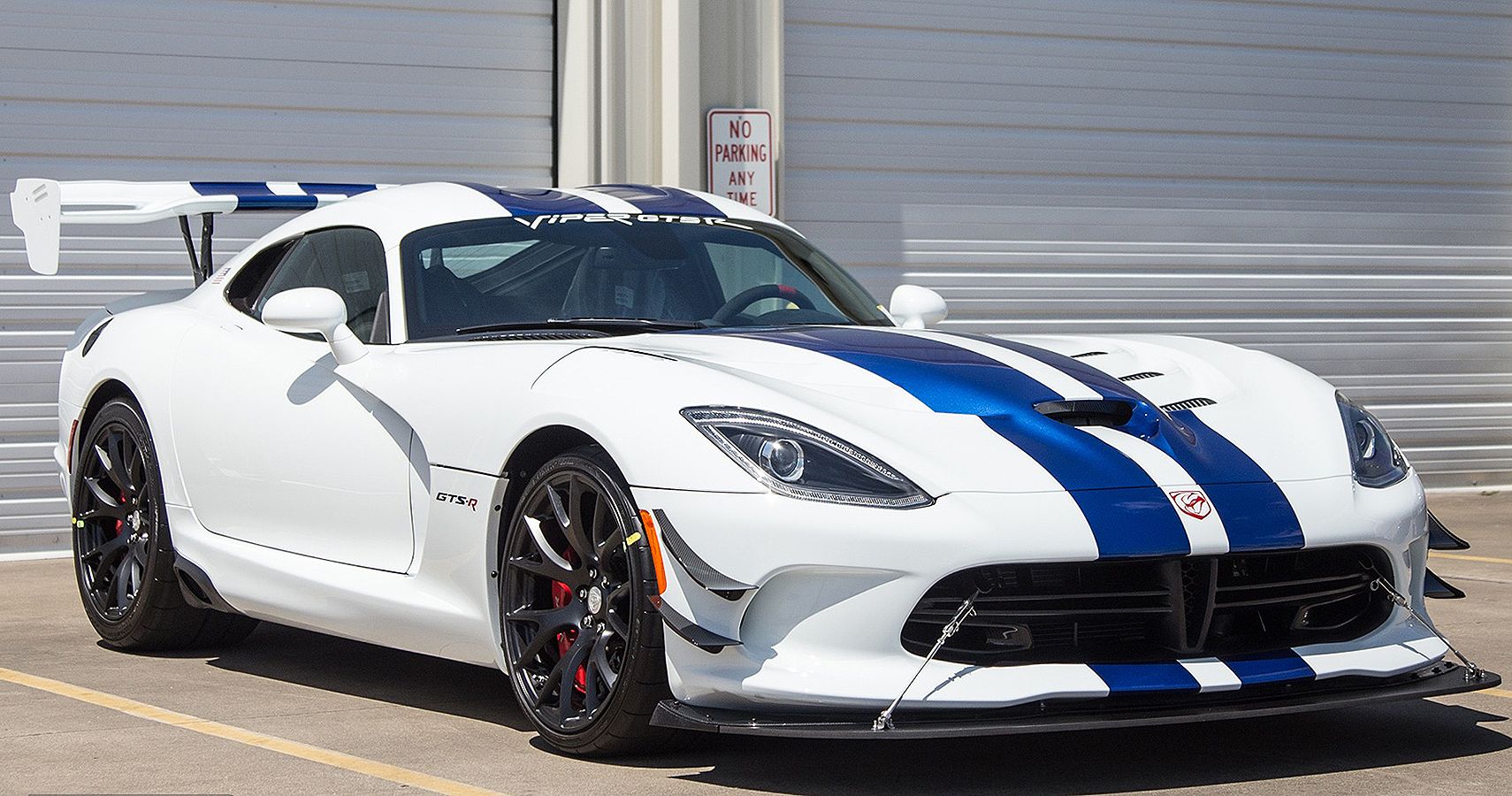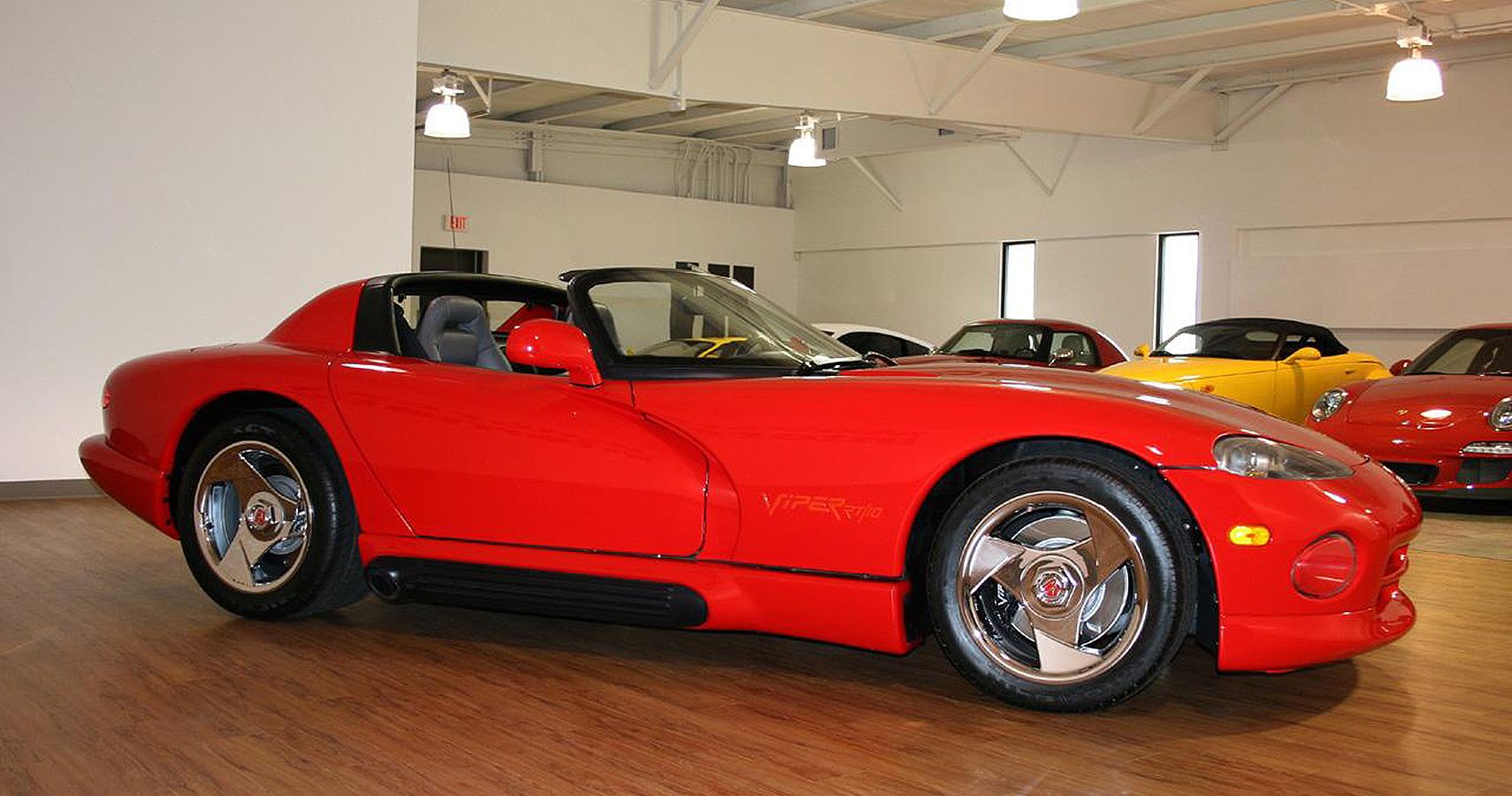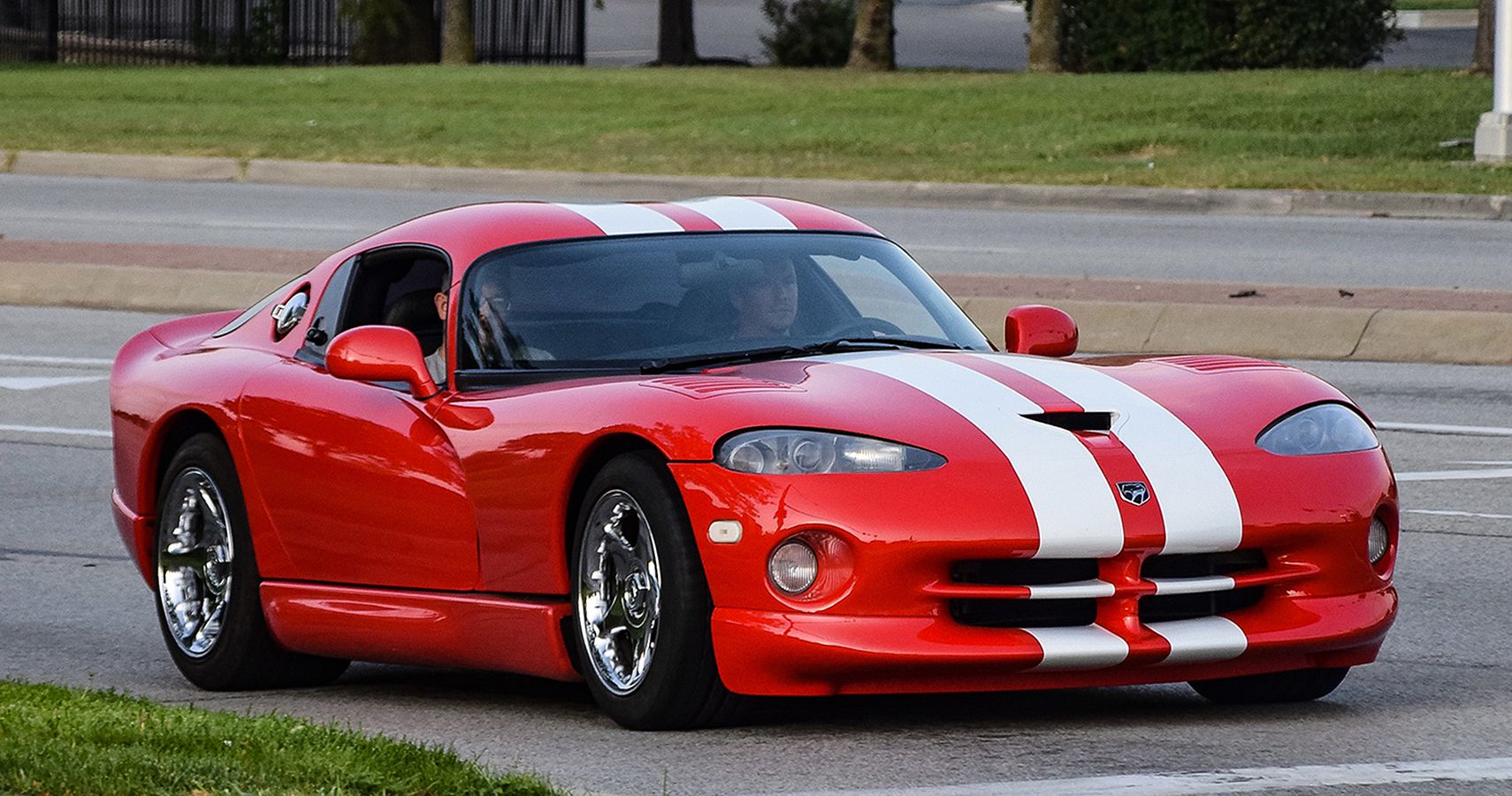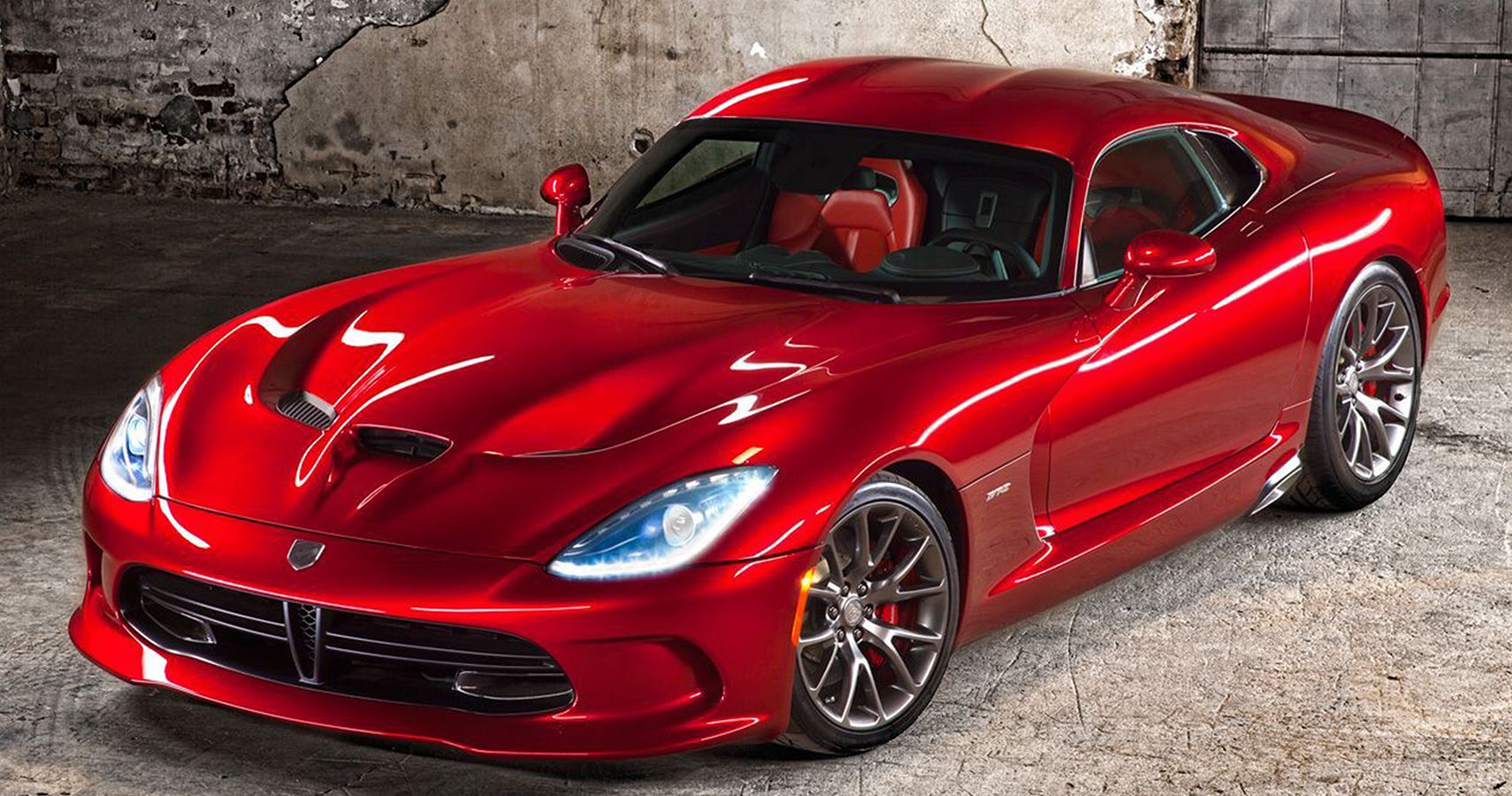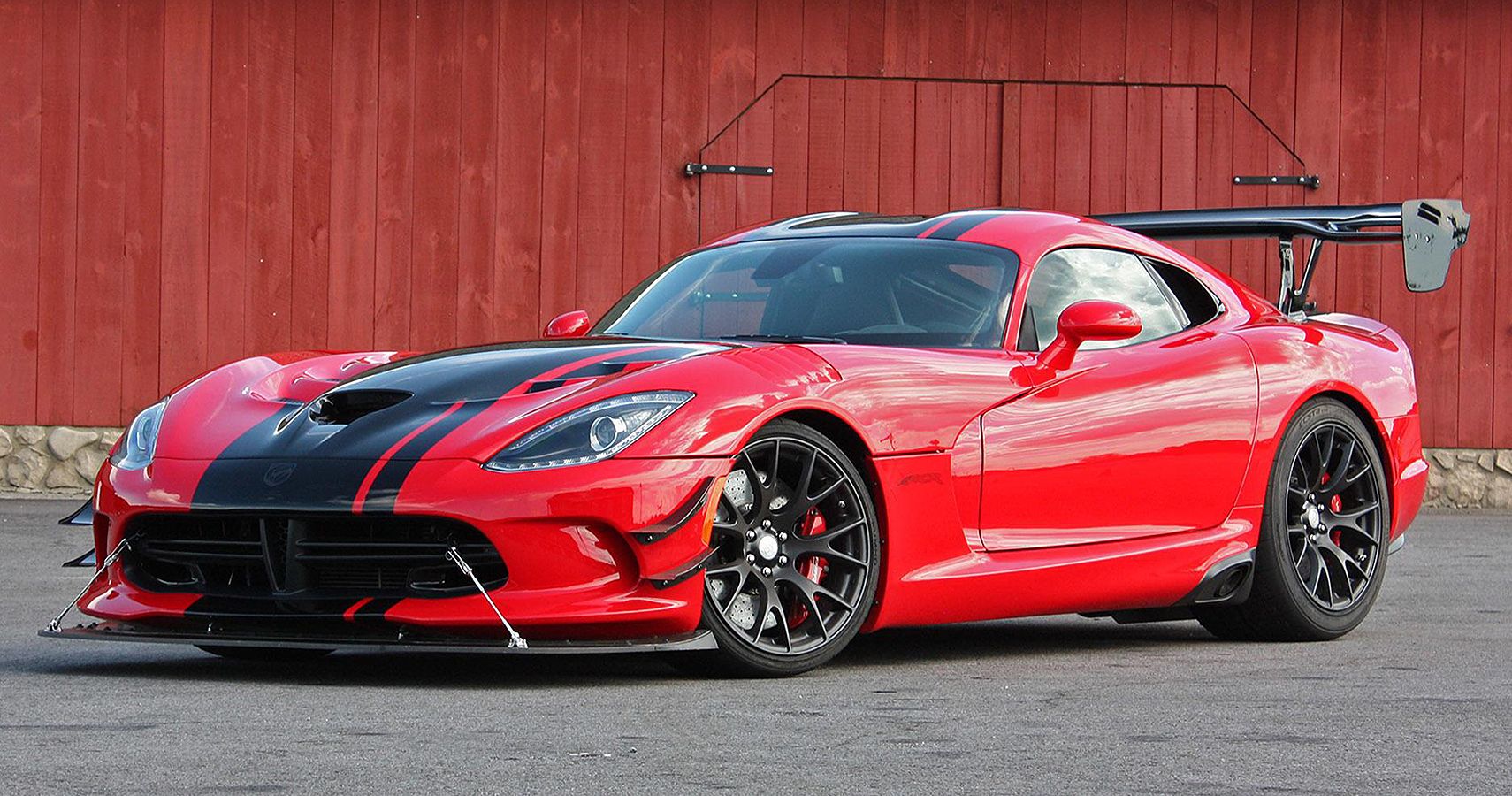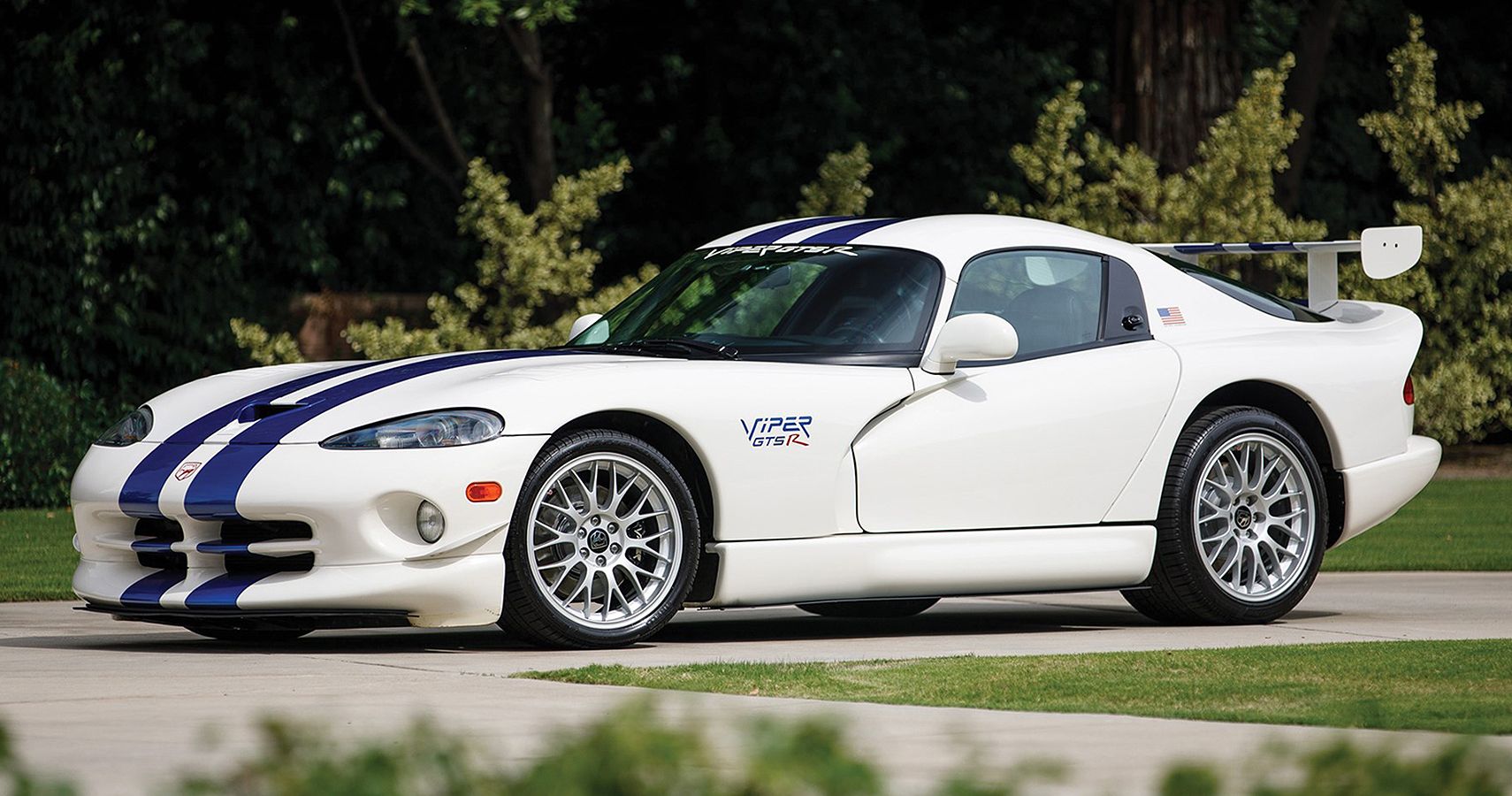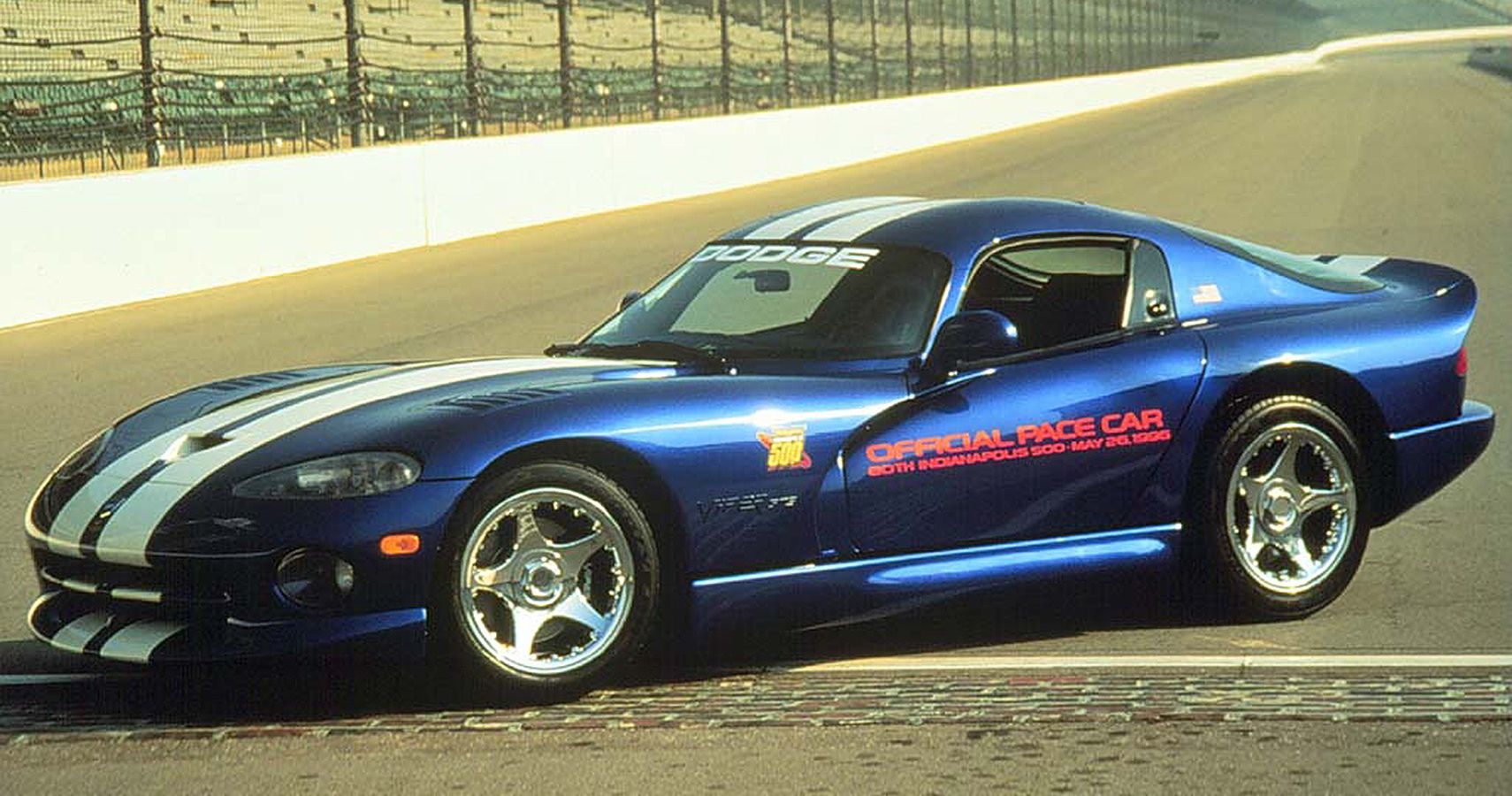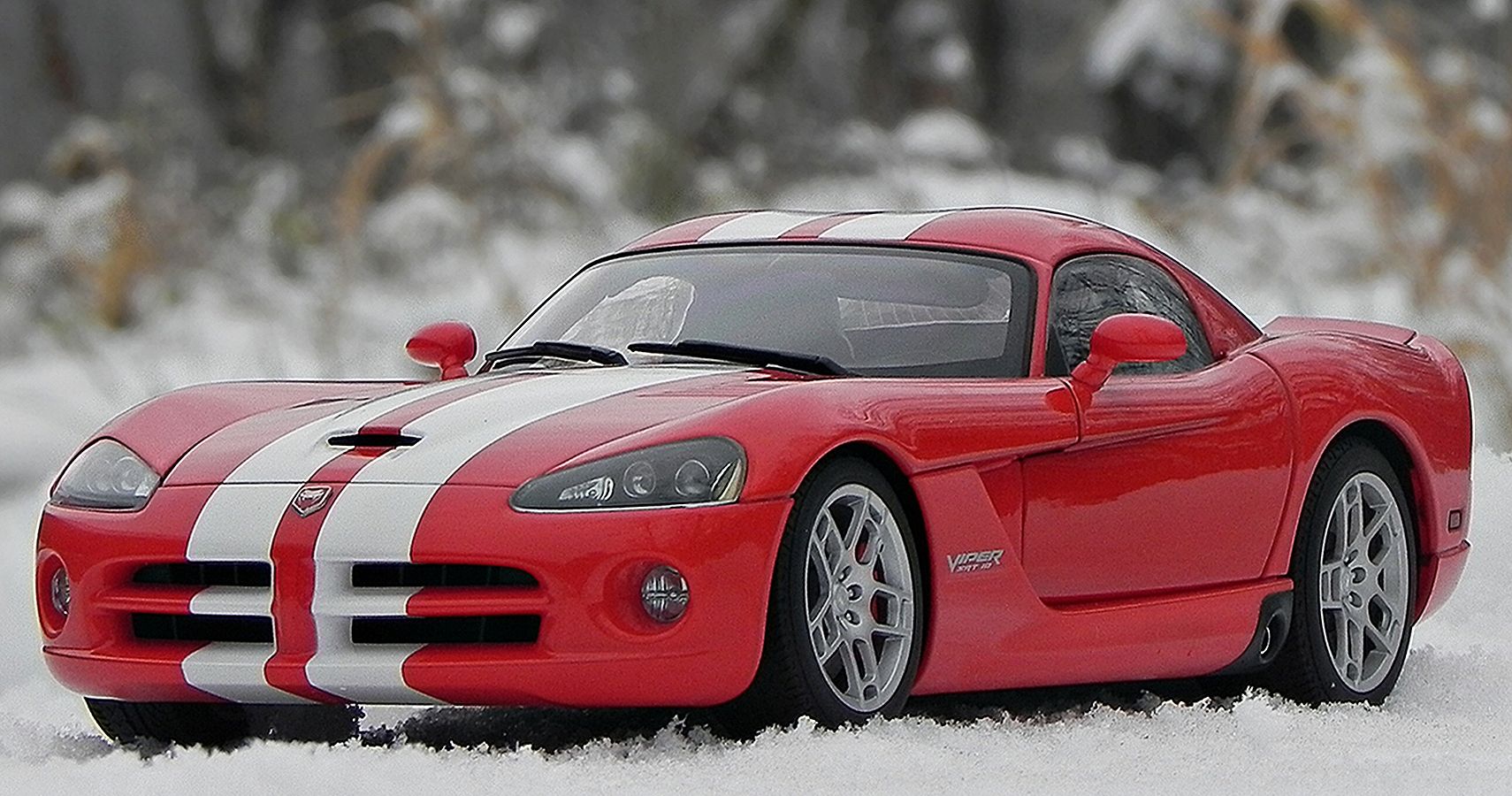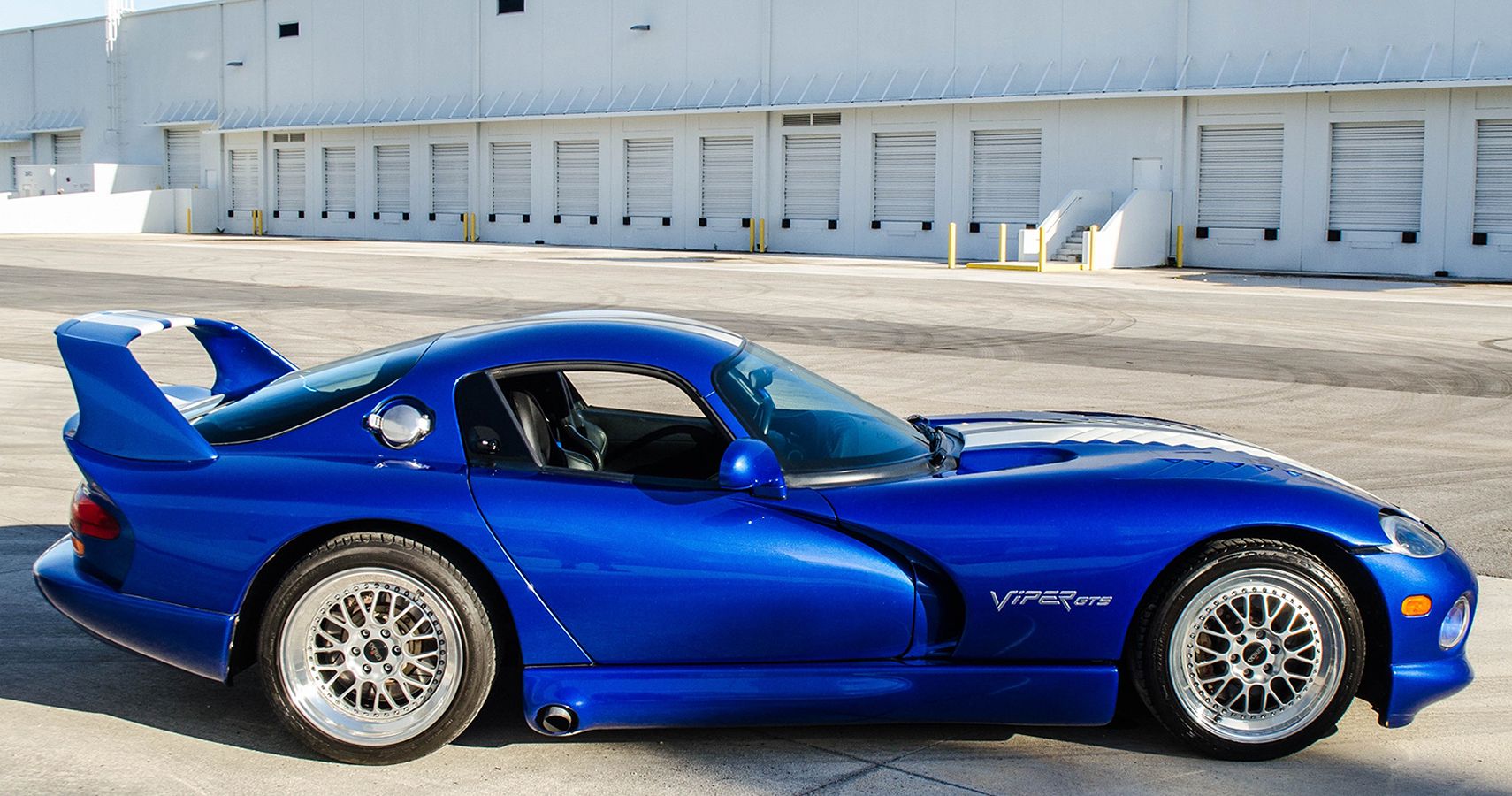The Viper has been around for some five generations already. Every time they think of killing it off, it somehow survives extinction and bounces right back. The Dodge Viper has been synonymous with the quintessential American sports muscle car – though it is less loved than the Vette.
In 2010, the Viper was number 10 on the list of Most American Cars, meaning 75% or more of its parts were made on domestic shores. It may not have as rich or as long a legacy as the Vette or the Mustang – but the Viper stands tall and proud, and very sleek in its history of generations. Here go ten of the most badass Vipers Dodge ever churned out…
10 2006 Viper Hennessey Venom 1000 TT
This Viper avatar was a joint venture of between Dodge and Hennessey Performance Engineering, the renowned tuning house that has given life to a zillion of supercars including Ferrari, McLaren, Porsche, etc. These speed machines are faster than the stock ones. The Venom 1000TT used an 8.5-liter twin-turbocharged V10 powerplant sourced from its older cousin; the 2003 Viper that was rated at 493 horsepower and 525 ft-lb of torque. The Venom 1000TT went above and beyond to 1014 horsepower and 1100 ft-lb torque making it one killing machine, that was road legal. Only 24 of these were produced and that makes each one priceless.
9 2017 Viper GTS-R
The 2017 Viper GTS-R is one of the best in the final Viper roster ever since 2017 saw the end of its legendary life. At least for now. This fifth-generation Viper carried an all-aluminum 8.4-liter V10 powerhouse under its hood that could easily jet out a massive 640 horsepower and an equally immense 600 ft-lb of torque.
The powerful engine of the 2017 GTS-R was mated to a Tremec TR-6060 six-speed manual transmission with a final drive ratio of 3.55. This car was meant for a superfast and seamless drive with a top speed of 208mph. A 0-60mph sprint time of 3.5 seconds was something that could satisfy any Viper fan with an endless need for speed.
8 1992 Viper RT/10
This was the beginning of the Viper era. Team Viper wanted to create a perfect car that could win a million hearts and some races in between. After a couple of years of persistence, the first-gen Viper debuted in 1992 and did exactly what Team Viper had tried to envision. It was a celebration. This new breed, though, was riding on a lot of expectations from its creators. By this time, the 60s and 70s muscles cars had already made a name for themselves in the segment. And most of them came from the other two giants of the Detroit Three. The first-born Viper had to be something special and this one definitely was, and still is.
7 2003 Viper SRT-10
The Dodge Viper nameplate has lasted for five generations for almost 25 years now. After the first two generations that racked up 11 years, it was time for a change. Before anybody could point that out to Dodge, it came up with a brand-new game plan for the Viper family. The SRT-10 debuted in 2003 as a third-gen Viper. SRT meant Street Racing Technology from the house of Chrysler’s performance division and 10 came from the count of cylinders in the engine bay. The SRT-10 had everything new about it. The styling and design were modern-day while the cues and detailing of the original Viper were still intact. Under the hood was a monstrous 500-horsepower 8.3-liter V10 keg resulting in a 0-60mph sprint of just 3.8 seconds.
6 2013 SRT Viper
In 2010, Dodge had stalled Viper production. The global recession was affecting everything, and the automobile industry was hit hard – no one had the money or wherewithal to buy cars, especially the premium models. Chrysler, one of the Detroit Three, received a government bailout and about that time Chrysler became the Fiat-Chrysler, solely focusing on cars that turned a profit. But the Viper was not to be denied and in 2013, the SRT Viper was reborn. With an all-aluminum 8.4-liter V10 mill that pulsed out 640 horsepower, it was a powerful ride. The chassis was lighter but stiffer, but the design was all that Viper ever stood for in its powerful, predatory sleekness.
5 2016 Viper ACR
2017 saw Viper come to an end again, much to the dismay of Viper fans all over. It went gracefully, but still landed a powerful last play with the ACR Viper – American Club Racing. This variant of the viper was first introduced way back in 1999, and with the 2016 model, left an indelible impression of the Viper again. Probably why most fans are clamoring for a revival.
While the engine remained the same 8.4-liter V10 that jetted out 645 horsepower – it came flush with Brembo brakes, a lighter carbon fiber body, Kumho tires, and a Bilstein suspension. The resulting car broke several production car records and beat almost every supercar on the Nürburgring.
4 1996 Viper GTS-R
After the oil crisis of the 70s that stunted muscle car production well into the 80s, the 90s was like a breath of fresh air for homemade 'Murican performance cars. Many muscle cars had their road-legal version and their pureblood racers. The 1996 Viper GTS-R was an all-in-all racer and despite its burly road presence, became one of the nimblest sports cars on track so built by Chrysler, Reynard Motorsport and Oreca. It finished 12th in the 12 Hours of Sebring and managed to beat many teams from Europe and England. It may not have come in the top three or even ten, but it was a commendable racer.
3 1997 Viper GT2 Road/Race Version
Viper carried on racing with GT2 in 1997 initially producing only the race trim which was not street legal. After the FIA GT Team and Driver series wins in 1997, Viper decided to release a limited edition of 10 road-legal GT2 that featured a massive rear wing and was white with blue racing stripes. It was lighter than the standard model with a bare interior and a more racer-like exterior.
The mill produced 460 horsepower and the cars looked pretty much like the GTS-R, minus the big logos of the sponsors. These cars may have borne the GTS-R branding, but were street-modified GT-2, and with just a limited production of 10 cars – sold at wild prices.
2 2005 Viper SRT-10 Coupe
The Viper SRT-10 Coupe was introduced in 2005 (as a 2006 model) and replaced the GTS-R of the second and previous generation of Vipers. It retained the GTS signature taillights and that unique double-bubble roof, basically crafted to let drivers sit in comfort with helmets in place. Some trims also came with that rear spoiler and racing stripes. The 8.3-liter V10 was good for 500 horsepower and 524 ft-lb torque – with a lighter and slimmer body, this raised the performance bar of the Viper. Better aerodynamics also added better speed and handling, so the SRT-10 Viper was the perfect foil for anyone who missed the good old days of Viper racing.
1 1996 Viper GTS
The 1996 Viper GTS was Dodge’s official entry of Viper’s second generation. It was a coupe version of the Viper RT/10, which in turn was often referred to as Viper generation 1.5. The Viper GTS was dubbed the double-bubble car because of the roof with raised sections to let drivers use helmets, and was in turn inspired by the Shelby Daytona so designed by Pete Brock. While it may have borrowed some tiny amounts of inspiration from the RT/10, the GTS was all new – with the same 8-liter V10 mill, but an increased output of 450 horses and 490 ft-lb torque. This was also the first Viper to carry airbags, aircon, power windows, and door locks as well.

